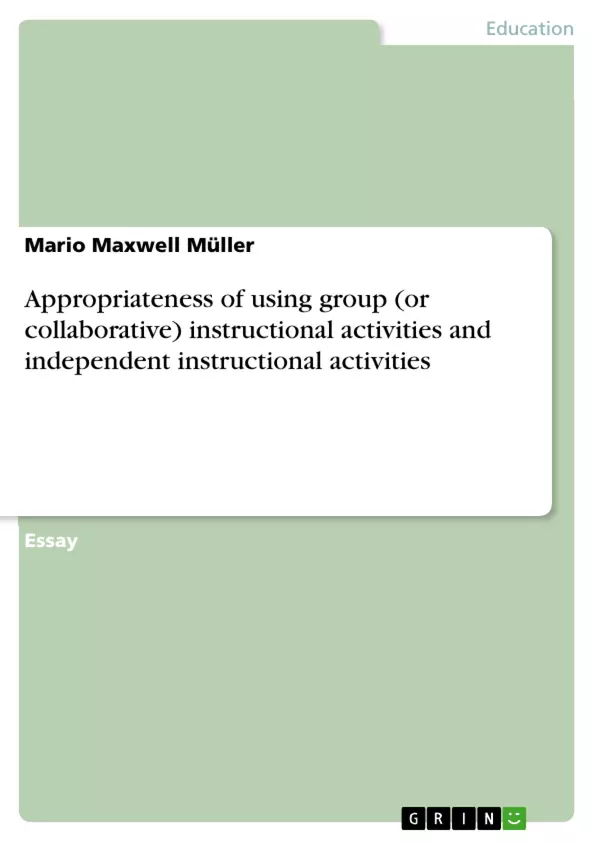This essay will highlight the importance of using appropriate collaborative instructional activities when planning lessons within an international school environment. Whether educators are teaching middle or secondary school, planning is an essential part of that, educators must conclude and offer a range of activities to stimulate the student educationally to achieve their goals and targets are important worldwide. The notion of implementing inquiry-based learning as part of the international baccalaureate programme fosters a love and appreciation for academic honesty, and cooperative learning, and prepares students for the 21st century by making them aware of being proactive within their classroom environments.
Inhaltsverzeichnis (Table of Contents)
- Abstract
- Introduction
- When to implement independent and group instructional activities
- Independent Instructional Activities
- Group Instructional Activities
Zielsetzung und Themenschwerpunkte (Objectives and Key Themes)
This essay explores the importance of utilizing appropriate collaborative and independent instructional activities within an international school setting, particularly within the framework of the International Baccalaureate (IB) curriculum. The focus is on planning lessons that promote student engagement, independent learning, and a diverse range of skills, ensuring the inclusion of students with varying learning styles and needs.
- The value of collaborative and independent instructional activities in fostering student engagement and academic success.
- The importance of planning and adapting lessons to cater to the diverse needs of students in an international school environment.
- The role of inquiry-based learning and cooperative learning in promoting student development and preparing them for the 21st century.
- The significance of addressing the needs of students with English as an Additional Language (EAL) and Special Educational Needs (SEN).
- The implementation of strategies like the jigsaw method for effective group learning and collaborative engagement.
Zusammenfassung der Kapitel (Chapter Summaries)
The essay begins by highlighting the importance of using collaborative instructional activities in planning lessons within an international school environment. It emphasizes the need to cater to diverse student needs, particularly those with EAL or SEN, to ensure their active participation and success. The essay then explores the concept of independent learning and its benefits, focusing on individualised learning experiences where students gather, analyze, and report on information they have inquired about.
The essay further delves into the concept of group instructional activities, particularly the jigsaw method, which encourages students to work in small groups to learn collaboratively. It emphasizes the importance of planning seating arrangements, facilitating face-to-face interaction, and promoting positive interdependence and individual accountability within group settings.
Schlüsselwörter (Keywords)
This essay focuses on the key concepts of collaboration, cooperative learning, independent learning, international education, inquiry-based learning, and differentiated instruction. It examines the application of these concepts within the context of the International Baccalaureate (IB) curriculum and addresses the needs of students with EAL and SEN in an international school environment.
- Citation du texte
- Dr. Mario Maxwell Müller (Auteur), 2022, Appropriateness of using group (or collaborative) instructional activities and independent instructional activities, Munich, GRIN Verlag, https://www.grin.com/document/1292428



